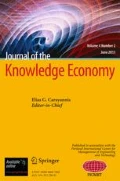Abstract
The omnipresent forever-quoted American expert on employee behavior, Abraham Maslow, imagined the evolution of employee behavior patterns in Anglo-Saxon monoculture work environments as an isosceles triangle composed of five levels. I shall refer to Maslow’s first level as the survival level. His next and second level of employee needs I shall refer to as a need for security, while the third level will be all that is social at work. His fourth level of needs about recognition for work successfully carried out resulting in professional longevity shall be summarized in one word: stability. Finally, I shall refer to Maslow’s top level of employee needs as satisfaction. It is here on his top level where Maslow said professional individual blossoming is supposed to be achieved. By adding mazes of cultural considerations, as a new second dimension to Maslow’s flat triangular model, brings cultural depth to the different levels of employee needs and behavior patterns for the 21st century. The second step, in updating Maslow, is a symbolic comparison of certain major industrial evolutions changing the working world since the industrial revolution in late 19th early 20th centuries. The third step is integrating employee knowledge as a spiraling influence on employee behavior no matter what level or whatever be the maze of cultures where employee X may live or work day in day out. The fourth step is the rounding off of unequal corners of global economic development through evolutionary exponential spirals of employee knowledge circulating through employee mazes on all five levels beginning at level #1 and spiraling up to and through level #5. Here future industries, not yet thought of, can be melted into a more economically equal world ideally symbolized in the shape of a globe. Our multidimensional pyramid is now transformed into a well rounded more economically equal circular globe: a globally knowledgeable economic community.



Similar content being viewed by others
Bibliography
websites:
magazines :
Grashow A, Linsky M, Heifetz R (2009) Leadership in a permanent crisis. HBS pp 62–69
Campbell A, Finkelstein S, Whitehead J (2009) Why good leaders make bad decisions. HBS pp 6–66
Séguéla J (2009) L’intelligence émotionnelle, la meilleure arme contre la crise. Management pp 80–83
Bennis W, O’Toole J (2009) What’s needed next: a culture of candor. HBS pp. 54-61
Hewlett SA, Sherbin L, Sumberg K (2009) How the gen Y and boomers will reshape your agenda. HBS pp 71–75
Kramer RM (2009) Rethinking trust. HBS pp 69–77
Foroohar R, Lee BJ, Kashiwagi A, Krovatin Q, Margolis M, Matthews O, McNicoll T, Overdorf J, Underhill W (2006) The ten most dynamic cities. Newsweek
Author information
Authors and Affiliations
Corresponding author
Rights and permissions
About this article
Cite this article
Harvard, P.S. Maslow, Mazes, Minotaurs; Updating Employee Needs and Behavior Patterns in a Knowledge-Based Global Economy. J Knowl Econ 1, 117–127 (2010). https://doi.org/10.1007/s13132-009-0008-5
Received:
Accepted:
Published:
Issue Date:
DOI: https://doi.org/10.1007/s13132-009-0008-5



